One of Italy’s lesser known tourist spots, Monte Argentario is where the rich and famous come to hide.
A wilder version of the Côte d’Azur with less of the pretense and cheaper food, this southern Tuscan peninsula can only be reached by road, foot or bicycle.
Its ragged coastline is dotted with crumbling forts and towers built by the Spanish kings who ruled the area 400 years ago.
Located in the Maremma region, less than an hour and a half from Rome, Monte Argentario’s most fascinating characteristic is its unusual geographic position.
It’s linked to the mainland by three isthmuses, one a road cutting through a lagoon with flamingos, the other two pine-backed sandy beaches.
The best place to begin a visit here is at the very top, from the lofty heights of the 18th century Frati Passionisti convent.
On a clear day, the view from the old convent takes in the whole of the Tuscan archipelago – Giglio, Montecristo and Elba and sometimes even Corsica in France.
Monte Argentario lies closer to the Eternal City than Florence, which is why it’s so popular with the Rome elite, many of whom have second homes here.
In July and August, Argentario’s beaches are packed with Romans, but it’s a very quiet place during off-peak season.
With several shingle beach coves accessible only by foot, it feels more like a secluded Greek island, albeit for the cypress and umbrella pines that hide the luxury villas scattered across the promontory.
Santo Stefano
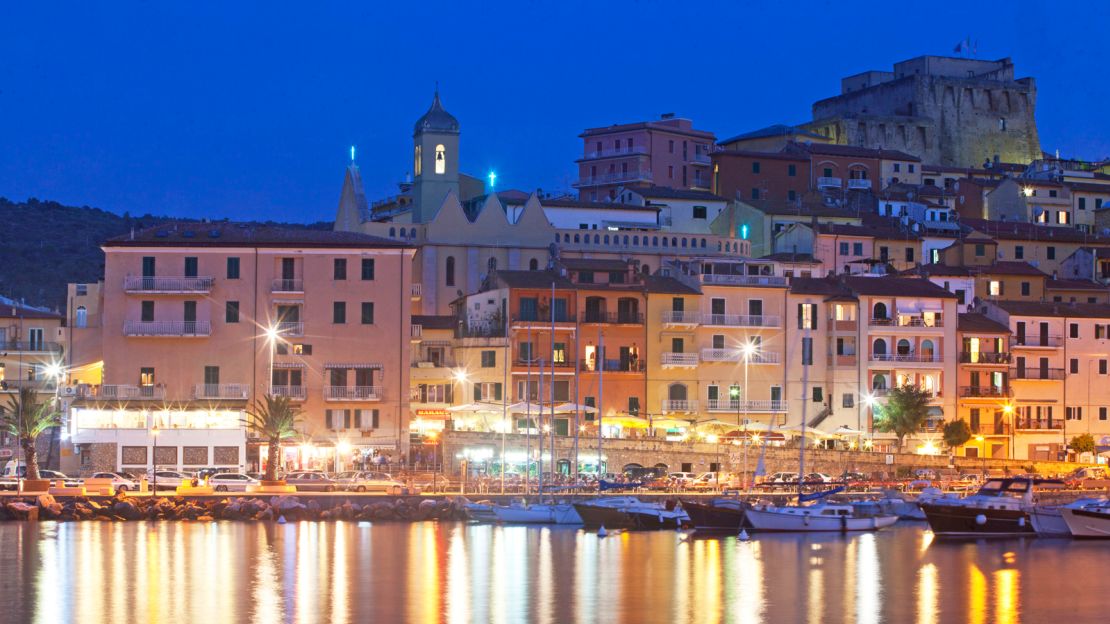
Monte Argentario has two centers, Porto Ercole, once a fishing village, now a chic resort, as well as the bigger commercial port of Santo Stefano.
Rebuilt in the 1950s after it was bombed at the end of the World War II, the town itself isn’t particularly special to look at.
Its main monument is the Fortezza Spagnola, constructed between the late 16th and early 17th century, which was used by France to protect itself from Britain in the Napoleonic wars.
On summer evenings Santo Stefano’s seafront become packed with locals and tourists taking an early evening stroll or having an ice cream along the long quay.
There’s a marina for luxury yachts cruising the Tuscan archipelago on one end, and its bars and restaurants are great for celebrity spotting in the summer.
The other end is still a fishing port as well as the location to catch ferries to the outlying island of Giglio or join a diving tour.
Santo Stefano explodes with noise and color every August 15 due to a regatta, which feels more like a carnival, ending with a fireworks display.
It’s worth stopping at the A. Ferrini cake shop above the sea front, a local institution that’s been there for decades.
Only one type of cake is sold, a cross between a muffin and shortbread, with dozens of different runny fillings from milk chocolate to myrtles’ and figs.
Giglio
The island of Giglio, which is an hour’s boat ride from Santo Stefano port, made headlines when the Costa Concordia sank there in 2012.
It has since returned to its normal self – a highly relaxing island retreat that’s good for both swimming and hiking.
The port is a coastal village with a colorful row of shops, as well as a lovely swimming spot with a small beach and crystalline waters.
Perched on the rocks, Hotel Saraceno, makes for a truly relaxing stay, and while there are several restaurants around the port, Vecchia Pergola is probably the best option for seafood.
Visitors can take a bus to the top of the island, where a 13th-century fortress lies hidden inside stonewalls around the castle.
Giglio also has its own wine, Ansonica, produced in the vineyards of Maremma, as well as a sweet bread, panficato, made from figs and grapes.
The drive from village Giglio Castello to Giglio Campese, a quiet beach resort with a lighthouse on one end and a 16th century Medici tower on the other, offers stunning views on the way down.
Hotel Saraceno, Via del Saraceno, 69, 58012 Isola del Giglio GR, Italy; +39 0564 809006
Timeless hotel
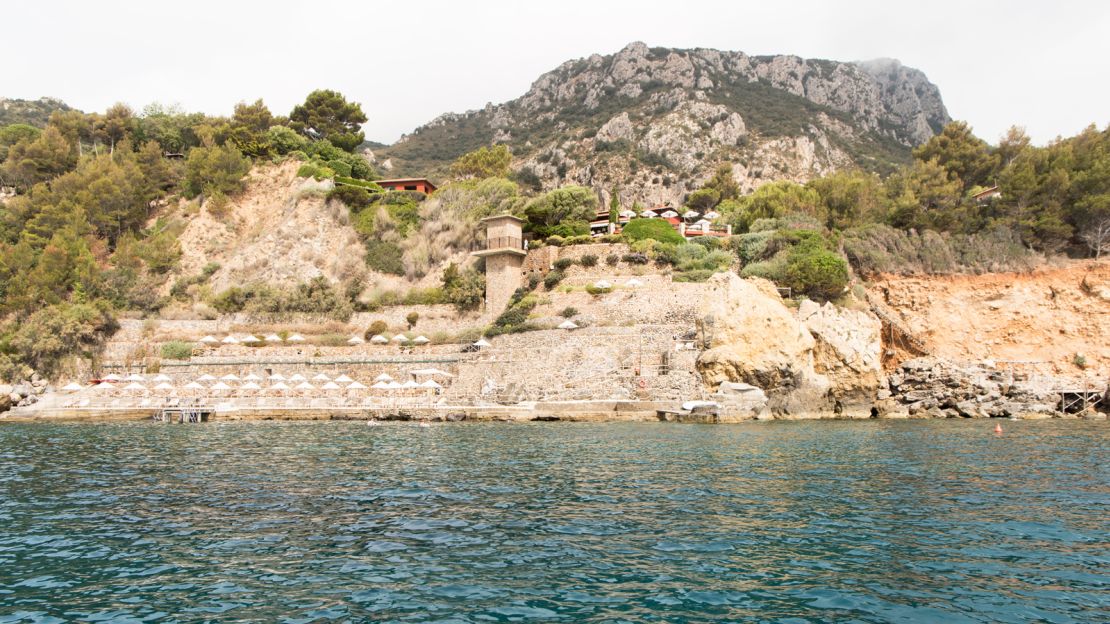
A stay at the iconic and bewitching Hotel Il Pellicano will serve as the highlight of any trip to Monte Argentario.
With the cheapest room priced around $450, Il Pellicano definitely isn’t aimed at the budget traveler, although visitors can usually pop in for a cocktail during low season.
Entry is via a gravel private road lined with oleander bushes and hidden by Cyprus pines.
The hotel has 50 rooms and a large pool with steps carved into rocks that leads to a private concrete beach with glimmering cobalt water.
It was built in the 1960s by American heiress Patsy Daszel and her husband Michael Graham.
Before they were introduced, Daszel had read about the English World War II pilot, who famously survived a a plane crash in Syria, in a newspaper and was intrigued by him.
The pair met in Los Angeles a few years later and soon married. Daszel moved to Italy with her new husband soon after and the pair set up Hotel Il Pellicano together.
It quickly became a mecca for Hollywood and Italian stars to tan and mingle after filming at the Cinecitta Studios in Rome.
Film stars Kirk Douglas, Britt Ekland and fashion designer Emilio Pucci are among the guests to have stayed there.
The hotel is now managed by Marie-Louise Scio, whose father bought it from the Grahams.
As one of Italy’s most respected tastemakers, Scio has kept the vintage “la dolce vita” flavor, wrought iron sun-loungers with yellow striped cushions and old polished furniture, but added a touch of modern chic.
Even the hotel shop is a class act, with beach classics from top brands like Eres.
Il Pellicano’s bespoke collection of T-shirts and silk wraps are designed by A.P.C Paris.
Beautiful beaches
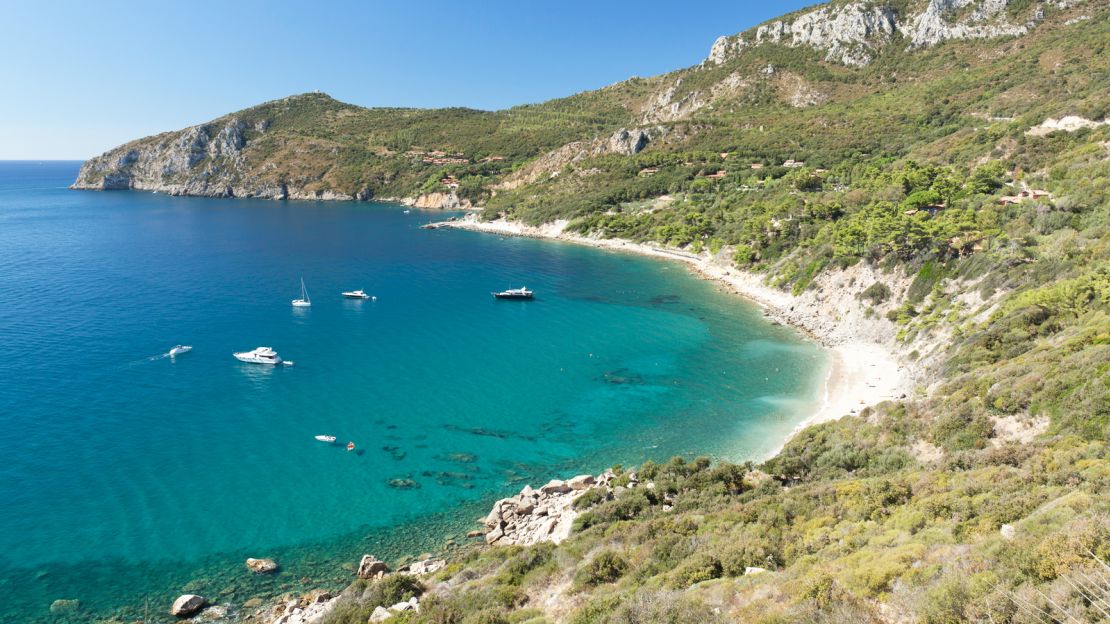
There are at least 20 beaches around Argentario, with many more coves accessible only by boat, which you can hire from either Porto Ercole or Santo Stefano with a skipper if needed.
One of the most accessible is La Feniglia on one of the isthmuses that links Porto Ercole on the promontory to the mainly land, a long strip of pine forest with white sandy beaches with dunes and driftwood.
This wild beach is so long that there’s room for privacy, even in high season.
It’s here that Italian painter Caravaggio is said to have washed up dead in 1610, after dying of malaria or lead poisoning – the jury is still out on the exact cause - as he fled murder charges in Rome.
His remains are buried in a church in nearby Porto Ercole, which is also home to the idyllic Spiaggia Lunga.
For the more adventurous, some of the most rewarding beaches, off-season at least, can be accessed by hiking downwards.
An example is Cala del Gesso, a sandy bay with rocks either side for snorkeling, roughly a 20-minute scramble from the road down a steep 700-foot long path through the Mediterranean scrub.
Pitigliano
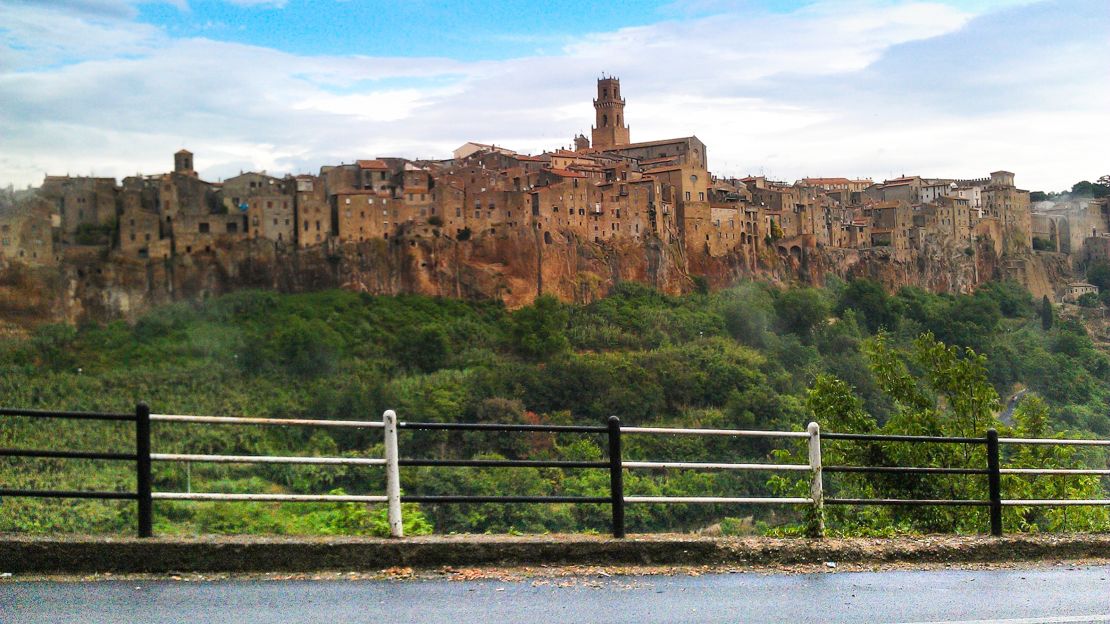
Just over an hour’s drive from Santo Stefano, rising out of the “tufa” rock is the ancient hill town of Pitigliano, its quarters linked by the arches of a huge aqueduct.
The cliffs here are filled with caves as well as a honeycomb of Etruscan catacombs.
However, Pitigliano is best known for its once sizable Jewish community, which began to move here from Rome in the 15th century.
Outlasting periods of religious oppression, a large number remained until the turn of the century, when many moved to Palestine and elsewhere.
With the surrender of Italian forces in 1943, they were forced into hiding, protected by local Christian families.
The old Jewish quarter, known locally as “Little Jerusalem,” boasts a fascinating Jewish Museum.
Set in an 18th century synagogue complete with caves where Passover “matzah” bread was made, it’s a great place to find out about kosher wine and ancient Jewish rituals.
Saturnia
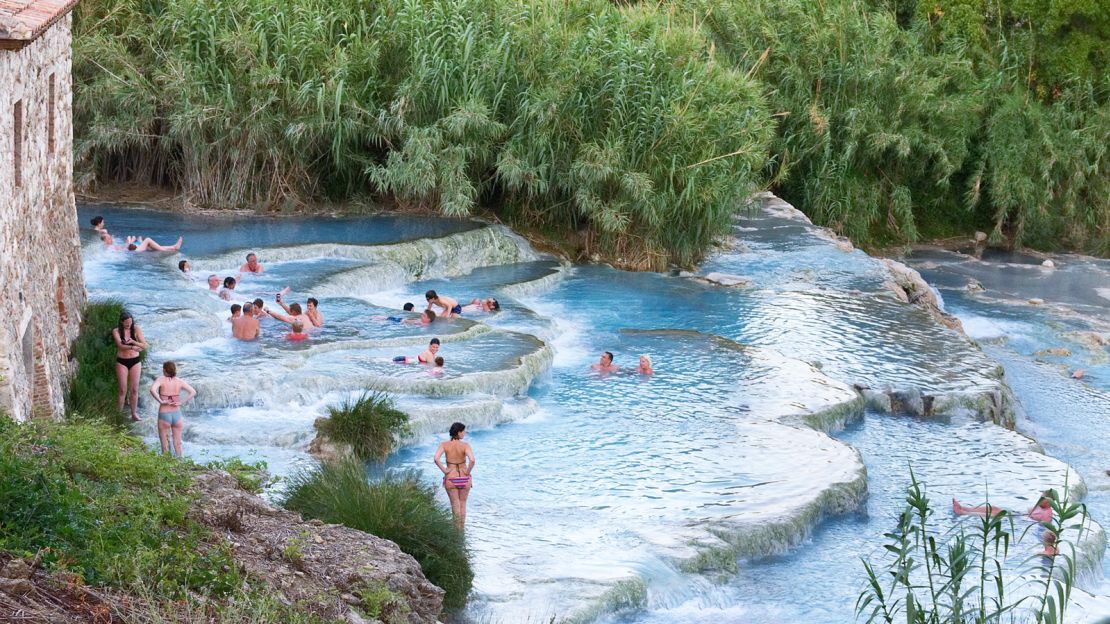
Positioned two kilometers north of Pitiligiano, through the gentle rolling hills of southern Tuscany, the tiny hamlet of Saturnia is best known for being home to one of Italy’s best sulphurous springs.
Even on the coldest winter day, hordes of Italians descend for a soak in the natural rock pools of Cascate di Mulino, with its warm turquoise water.
For those who require a less rustic experience, hotel Terme di Saturnia features a large pool and spa with sun loungers and massage and beauty treatments.
While a night here isn’t cheap, it’s a great place to observe wealthy Romans doing what their ancestors have been doing here for around 3,000 years.
Easing their aches and pains in Saturnia’s hot springs. Bring slides and a bathrobe.
Terme di Saturnia, Localita Follonata, 58014 Saturnia, Manciano, Italy; +39 0564 600311









